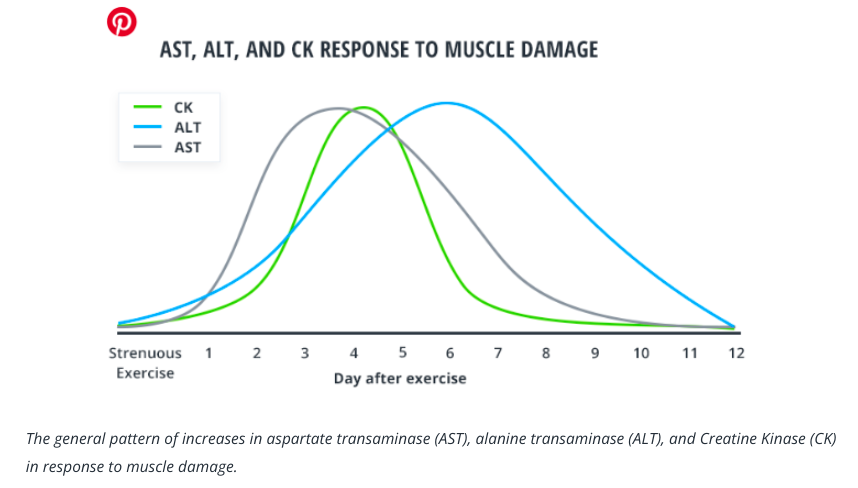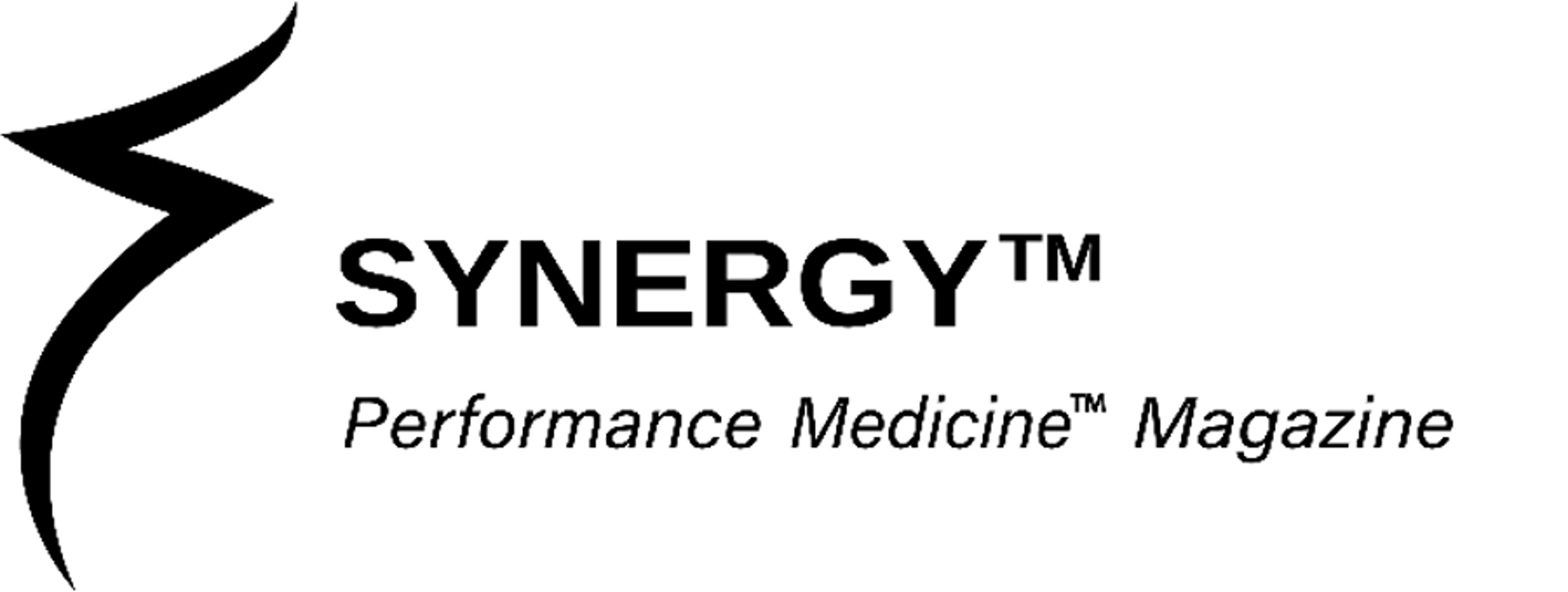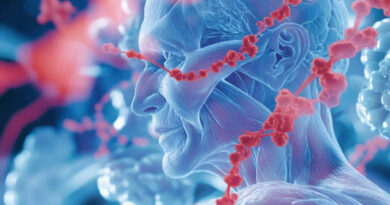Athlete Blood Test
Life begins and ends at the cellular level.
The beauty of blood analysis is its ability to define the truth. Blood analysis provides a unique window into an endurance athlete’s health, performance, and longevity.
Biomarkers like Vitamin D and ferritin can directly impact athletic performance while cortisol and creatine kinase provide insight about recovery, training volume, and injury prevention.
Analyzing the physiological markers in your blood is a fast and effective way to discover your biometric benchmarks and measure the impact of lifestyle decisions because your blood never lies.
Endurance athletes can now rely on blood testing to pinpoint focus areas and implement effective changes to improve performance.
Endurance athletes require special bloodwork because intense training can deplete key nutrients like iron and vitamin D, crucial for oxygen delivery and muscle function, making them susceptible to deficiencies that can significantly impact their performance and recovery.
Endurance athletes require precision nutrition to complement their training and recovery protocols.
Athletes are exposed to many stressors that can increase their risk of injury and illness and cause excessive fatigue. These include physical workload, sleep loss, travel, and psychological stress.
Two synergistic approaches to blood biomarker analysis in sport—profiling and monitoring—provide insight into an athlete’s nutritional and physiological status. Weaving these approaches with contextual data may mitigate issues related to overtraining, injury, and illness.
Blood tests can identify these deficiencies and guide dietary adjustments to optimize training and prevent injuries; this includes monitoring markers for anemia, inflammation, and hormonal imbalances that may arise from heavy exercise.

Key points why endurance athletes need unique bloodwork:
→ Iron Deficiency:
Frequent sweating and muscle breakdown during endurance training can lead to iron loss, potentially causing anemia, which impacts oxygen delivery to muscles and affects performance.
→ Vitamin D Deficiency:
Low vitamin D levels can impair muscle recovery, increase injury risk, and affect immune function, making it essential to monitor endurance athletes.
→ Early Detection of Issues:
Blood tests can identify potential problems—such as electrolyte imbalances, thyroid dysfunction, or hormonal imbalances—before they impact training.
→ Monitoring Training Load:
Specific blood markers can indicate overtraining or inadequate recovery, allowing coaches to adjust training plans accordingly.
→ Nutritional Guidance:
Blood test results can help sports dietitians design personalized dietary plans to address specific nutrient deficiencies and support optimal performance.
Common blood markers monitored in endurance athletes:
→ Hemoglobin and Ferritin [Iron levels] – assess iron deficiency anemia;
→ Vitamin D – check Vitamin D deficiency;
→ C-Reactive Protein [CRP] – monitor inflammation;
→ Creatine Kinase [CK] – assess muscle damage and recovery;
→ Thyroid hormones – check for thyroid function;
→ Cortisol and Testosterone – evaluate stress and recovery
Find below a few predominant biomarkers tested for endurance athletes.
Vitamin D
Vitamin D deficiency is one of the most common nutrient deficiencies worldwide, including among athletes. Vitamin D has many essential bodily roles, and its impact on athletic performance is even more pronounced.
Vitamin D can reduce inflammation, specifically the inflammatory marker C-reactive protein [CRP]. A meta-analysis from the journal Nutrients found that Vitamin D supplementation can lower serum CRP levels by 20%.
CRP is a protein made by the liver and found in blood plasma. Its circulating substrates in blood plasma become elevated in response to inflammation.
Low Vitamin D levels can lead to decreased testosterone – especially in men. Testosterone is an anabolic hormone produced in men and women that helps increase bone strength and stimulates muscle mass and strength.
Vitamin D is essential for the following:
→ Enhancing bone health;
→ Mitigating inflammation;
→ Increasing muscle mass and strength;
→ Proliferating muscle fiber and strength;
→ Supporting immune function and health
Ingesting Vitamin D3 with Vitamin K2 ensures calcium absorption by bones rather than calcium deposits in the arteries. Vitamin K2 helps ignite the protein molecules that strengthen the bones when calcium is absorbed.

Ferritin
Iron is an essential mineral in red blood cells that carries oxygen to cells in the body. Ferritin on the other hand is a protein that stores iron and releases it when the body needs it. The highest iron concentrations are found in liver and immune system cells. Physicians do not routinely check this marker.
Iron deficiency is one of the most common nutritional deficiencies on the planet – especially in women. Endurance athletes face a greater risk of deficient iron status because it is lost during heavy training periods through sweating, running, and gastrointestinal bleeding that can occur after intense workouts.
Athletes—predominantly female athletes—should track ferritin status to avoid fatigue and plateauing during athletic events. InsideTracker provides ferritin, serum iron, hemoglobin, and RBC tests and specific recommendations on improving them.
It is difficult to determine how much iron is enough. Physicians tend to look at how much hemoglobin is in your blood if you are sedentary. Said tendency is not an accurate path when it comes to endurance athletes. The frequency and intensity of training increases blood volume, which dilutes the hemoglobin concentration.
The biomarker ferritin is a more accurate measurement for endurance athletes. Ferritin is a protein that stores iron in the bone marrow, liver, and spleen for later use. Evidence suggests that endurance performance will be compromised with suboptimal ferritin levels even if one’s hemoglobin levels are normal.
Research indicates athlete-specific threshold values for three stages of iron shortage. In addition to hemoglobin and ferritin, they include another marker of iron status termed transferrin saturation – which defines the utilization fraction of your blood’s iron capacity. Details of the three stages are beyond the scope of this content.
Many endurance athletes have suboptimal ferritin levels despite normal or optimal hemoglobin and hematocrit levels. This is consistent with stages one and two of iron deficiency. Red blood cell production is not decreased, but athletic performance will likely be sub-par.
Research suggests that iron has key roles in athletic performance beyond red blood cell proliferation:
→ Low ferritin for athletes may impair oxidative enzymes and respiratory proteins, reducing the ability to use oxygen efficiently;
→ Inflammation via exertion may reduce iron absorption and the ability to mobilize iron to form new red blood cells;
→ Low ferritin levels may impair aerobic adaptation from training. It is unclear whether iron supplements taken by non-anemic endurance athletes can improve aerobic performance. The more severe the iron deficiency, the more benefit. But borderline cases may also benefit from a preventative measure;
→ Low ferritin may reduce adenosine triphosphate [ATP] production and mitochondrial biogenesis. This may contribute to swift muscle fatigue, lactic acid proliferation, diminished intracellular signaling, DNA and RNA synthesis, synaptic signaling, active transport, and muscle contraction.

Cortisol
Cortisol, also known as the stress hormone, is a steroid hormone produced by the adrenal glands. It responds to physical and emotional stress and is crucial in many essential physiological functions. Overtraining may lead to physical stress and high cortisol levels.
Cortisol is an important hormone produced by the adrenal glands and plays many critical bodily functions. It is essential for athletic performance and overall health. Balancing its levels by managing training, nutrition, and physical and psychological stress is key.
Exercise represents a form of stress that engages the endocrine system at multiple levels to provide necessary functional responses and morphological adaptations. Normal endocrine function is essential for acute stress responses and sustaining positive energy, anabolic/catabolic balance, and body composition.
Relative to endurance exercise, cortisol rises in proportion to intensity. So during high-intensity efforts, cortisol production will be supercharged, once again – a good thing. This extra “hit” gives you the boost you need to do those hard workouts.
The minimum intensity of endurance exercise necessary to produce a cortisol response is about 60% of VO2 max. Cortisol levels increase linearly with exercise intensity, and this threshold is independent of training.
Endurance athletes consistently with high cortisol levels face a greater risk of chronic fatigue, high blood glucose levels, and weight gain. The active ingredient of whey protein [Alpha-lactalbumin] has been found to reduce cortisol and enhance serotonin production. Herbs such as Ashwagandha may help mitigate elevated cortisol levels.
Cortisol levels are high early in the morning and low during sleep onset. The cortisol circadian rhythm is associated with adrenal insufficiency, which is directly related to your performance. Inconsistent sleep patterns, timing and frequency of blue light, room temperature, sleep deprivation, and other variables influence the hormonal mayhem.
Cortisol [the stress hormone] levels increase with heightened emotional and physical stress, including exercise. The adrenal glands release cortisol which triggers the “fight or flight” response of the sympathetic nervous system [SNS].
The SNS is one branch of the autonomic nervous system [ANS]. The other branch is the parasympathetic nervous system [PNS], the “rest and digest” response to stress.
Training involves both anabolic and catabolic processes. Body cells break down sugars to provide ATP to do the work necessary for exercise, such as muscle contractions. This is catabolism. Muscle cells also must repair muscle tissue damaged by exercise by building new muscle.
Cortisol breaks down muscle [catabolic] So when cortisol levels are chronically high, athletic performance and post-workout recovery can decline. Elevated cortisol levels are associated with higher blood sugar levels, age, and sex [women typically have higher levels than men].
The quality of your sleep is critical. Your body undergoes more stress from poor sleep habits than you may realize. Adequate sleep—more than seven hours per night—is essential to helping maintain the cortisol circadian rhythm and enhancing your body’s recovery from exertion.
Cortisol is a stress hormone that works overtime thanks to the physical and mental stressors of the daily grist. It increases energy to cope with stress and influences the sleep/wake cycle, blood sugar, and blood pressure. Balancing the ANS cannot be understated.

Creatine Kinase
Swift recovery is vital to an endurance athlete’s health and performance progression. The biomarker creatine kinase (CK) helps determine general body strain.
Creatine kinase [CK] is an enzyme in your skeletal muscle, heart, and brain. When any of these tissues are damaged, they leak creatine kinase into your bloodstream. Elevated CK levels may indicate muscle injury or disease. An enzyme is a protein that acts as a catalyst to bring about a specific biochemical reaction.
CK is a cumulative measure of tissue breakdown that allows us to gauge how the body responds to training loads, whether it is strength training, mileage for ultra-endurance athletes, periodization training, or other training.
The biomarker CK indicates how much is released in the bloodstream from the tissue, skeletal muscle, heart, and brain and represents a surefire sign of muscle damage from system overload.
CK is an enzyme that elevates when muscle damage occurs. Test results of this biomarker allow athletes to see how their bodies react to training load and intensity. CK peaks about two to four days after intense exercise and returns to normal levels [< 200 units] for a few days, depending on the intensity of the exercise.
CK was used as a cardiac damage biomarker in the past, but now it is mainly employed as a muscular overload measurement. Nearly everyone involved with exercise is familiar with delayed-onset muscle soreness [DOMS], in which CK usually peaks in the blood a few days after exertion.
Measuring CK levels via bloodwork and wearable technology are invaluable steps to monitoring muscle breakdown.
The small amount of CK typically in your blood mainly comes from your skeletal muscles (the muscles attached to your bones and tendons). Any condition, injury, or event that causes muscle damage and/or interferes with muscle energy production or use increases the levels of CK in your blood.
Intense exercise can increase CK levels, and muscle diseases [myopathies] such as muscular dystrophy [MD] can increase CK levels.
There are three types of CK enzymes:
→ CK-MM – Found in your skeletal muscles;
→ CK-MB – Found in your heart muscle;
→ CK-BB – Found in your brain tissue
There is a correlation between CK level and injury. A chronically elevated CK will most likely result in muscle pain, muscle soreness, weakness, injury, and more—not ideal for top athletic performance. CK peaks after intense exertion and may remain elevated for several days compared to a sedentary person.
Liver Enzymes | ALT and AST
The liver is the principal “chemist” in our body. It is the primary location for the conversion of one compound to another. Because of this, the liver can be considered the body’s detoxifier. If you have a liver, there is no need to “detox” through juice cleanses or lengthy fasts. Your liver does that for you every day.
Testing AST, ALT, GGT, and albumin to evaluate overall liver function. The first three are enzymes, and albumin is the main protein produced by the liver. Albumin is the primary transporter of hormones, drugs, and other compounds in our blood and helps control the pressure in our circulatory system.
Albumin levels outside the normal range are rare for InsideTracker users. Low levels are likely caused by severe liver damage, and high levels are typically due to dehydration or excessively high protein intake. Both high and low levels require medical attention.
The other three markers in our liver group are enzymes that initiate or support detoxifying, energy-producing, and housekeeping reactions that keep our bodies functioning.
→ ALT – Alanine Transaminase;
→ AST – Aspartate Transaminase;
→ GGT – Gamma-Glutamyl Transpeptidase
ALT and AST are also found in significant quantities in skeletal muscles. When the muscle is damaged, such as in response to exercise, AST and ALT are released, and their concentration in the blood increases. GGT is relatively specific to the liver.

Trail runners, road cyclists, and mountain bikers are more susceptible to these elevations. CK is another marker of muscle damage that follows the same pattern as ALT and AST after strenuous exercise. Adequate protein intake after strenuous exercise is required to repair the damage.
Training frequency and volume test an endurance athlete’s threshold. ALT and AST are enzymes in the liver and muscles that support detoxification and energy production.
Elevated levels are incurred with muscle damage via strenuous exertion due to resistance and endurance training/events, altitude fluctuations during exertion, excess caloric intake, supplements, and medications to list a few culprits.
Blood Biomarkers
→ Vitamin B12
It has a vital role in the production of healthy red blood cells and has a function in nerve health;
→ Ferritin
The amount of ferritin in the blood reflects the total level of iron stored within your body;
→ Vitamin D
Plays an essential role in health, including developing and preserving healthy bones, boosting our immune system, muscle function, and energy levels, and helping to reduce inflammation;
→ Cortisol
A steroid hormone that is released when the body is under stress. Anxiety, a restricted diet, or over-training can all cause cortisol levels to rise;
→ Hematocrit
This is the volume percentage of red blood cells in your blood.
→ Hemoglobin
The red protein responsible for transporting oxygen in the blood
→ Cell hemoglobin
The amount of hemoglobin inside the red blood cells;
→ Corpuscular hemoglobin concentration
The concentration of hemoglobin inside the red blood cells;
→ Corpuscular volume
The average size of your red blood cells;
→ Red blood cells
Necessary oxygen transporters;
→ Platelet volume
The average size of blood platelets (corpuscles that play an essential role in clotting;
→ Red blood cells distribution
The measurement of the variation of the size of your red blood cells;
→ White blood cells
The number of white blood cells per volume of blood. White blood cells make up your immune system and help protect your body against illness and disease;
→ Follicle-stimulating hormone
Regulates the functions of the reproductive system;
→ Luteinizing hormone
It plays a vital role in the human reproductive system;
→ Prolactin
A hormone produced by the pituitary gland. Slight increases can occur as part of a stress reaction;
→ Testosterone
A hormone that affects the brain, bone, and muscle mass, fat distribution, the vascular system, energy levels, sexual functioning, and fertility;
→ Thyroid
Plays a vital role in regulating the production of hormones by the thyroid gland;
→ A Triiodothyronine [T3]
A test can indicate if the thyroid is performing correctly;
→Thyroxine [T4]
A test used to check that the thyroid is performing correctly

Sports blood tests mandate precision. The athlete must understand the importance of biomarkers specific to their needs to enhance unparalleled health, performance, and longevity in life and sport.
Nutrition Biomarkers
Nutrition is all about fuelling your body with the proper nutrients and macros. But they affect more than just your energy. The right vitamins and minerals can help with recovery, reduce the risk of injury, and increase your athletic performance. Here are the markers included in our tests that track your nutrition:
→ Active B12;
→ Albumin;
→ Calcium;
→ Ferritin;
→ GGT;
→ Hemoglobin;
→ HbA1c;
→ HDL;
→ HDL Ratio;
→ LDL;
→ Magnesium;
→ Total Cholesterol;
→ Triglycerides;
→ Urea;
→ Uric acid/urate;
→ Vitamin D
Recovery Biomarkers
Overtraining can profoundly impact your performance, recovery, and health. Shortchanging your body the time or fuel to recover can lead to inflammation, hormone imbalances, and long-term injuries. Here are the biomarkers we test related to your recovery and risk of injury:
→ ALT;
→ Cortisol;
→ hs-CRP;
→ Creatinine;
→ Creatine Kinase;
→ eGFR;
→ Ferritin;
→ WBC
Energy Level Biomarkers
Energy is the foundation of sports performance. But it’s not just about feeling tired. It’s about how nutrition fuels your body to repair muscle, transport blood around your body, and keep your hormones balanced through proper rest and recovery. Many biomarkers, including vitamin D, B12, and magnesium, are tracked to measure your energy.
→ Vitamin D;
→ Active B12;
→ Ferritin;
→ FSH;
→ Magnesium;
→ T3;
→ T4;
→ TSH
Injury Prevention Biomarkers
We want to keep you in the game. By checking markers related to injury, our sports blood tests are your early warning system. You can check how your training and diet impact your body. These are the markers we test that help you prevent injury and increase longevity:
→ Magnesium;
→ Testosterone;
→ Oestradiol:
→ FSH;
→ LH;
→ Vitamin D;
→ Calcium;
→ ALP

The Athlete Blood Test pinpoints biomarkers and categories specific to endurance athletes, compared to the 5-7 biomarkers typically tested at a physician’s office or clinic.
The key is identifying and understanding nutrition and performance via precise information about nutritional deficiencies, hormonal imbalances, hydration level, injury risk, endurance profile, muscle status, recovery, and more. Find below an example of one of its panels:
ABT GOLD PANEL
→ Complete Blood Count with Differential;
→ Comprehensive Metabolic Panel;
→ Reticulocytes;
→ Iron;
→ Ferritin;
→ Vitamin B12;
→ Folate;
→ Vitamin D, 25-OH;
→ Magnesium;
→ Potassium;
→ Sodium;
→ Cortisol;
→ Thyroid Stimulating Hormone;
→ Sex Hormone Binding Globulin;
→ Free Testosterone;
→ Total Testosterone;
→ DHEAS-S;
→ +OmegaCheck – Omega-3 and omega-6 fatty acids panel;
→ Lipid Panel, which includes total cholesterol, triglycerides, LDL-C, VLDL, HDL-C;
→ Thyroid panel – TSH, free T3, free T4;
→ Metabolic health – Hemoglobin A1C, Uric Acid, Fasting Insulin;
→ Pancreatic enzymes – lipase and amylase;
→ Inflammation – CRP-hs;
→ Sex hormones – Testosterone, progesterone, estrogen;
→ Copper and Magnesium RBC
Ideal bloodwork intervals:
→ Pre-season – establish a baseline and identify potential issues before intensive training;
→ Mid-season – monitor progress and address any concerns that may arise during training;
→ Post-season – assess recovery and plan for the next training cycle.
Key bloodwork results:
→ Training load – bloodwork should be interpreted considering the athlete’s current training volume and intensity;
→ Individual needs – consult with a healthcare provider to determine specific tests most relevant to the athlete’s desired outcomes.

Achieving peak performance often goes beyond training and nutrition plans. It involves leveraging advanced tools like blood analysis. These tools help sports dietitians [Sports RDs] tailor nutrition strategies to individual athletes to optimize athletic performance.
Sports RDs play a pivotal role in utilizing blood analysis to enhance athletic performance, and ensure optimal health, recovery, and competitive edge.
Blood analysis empowers sports dietitians to help athletes optimize athletic performance. The Athlete Blood Test can simplify the analysis process for Sports RDs and their athletes.
The preeminent sports dietitian in the ultra-endurance sphere is Dina Griffin, MS, RDN, CSSD, CISSN, METS II | The Nutrition Mechanic.
→ Optimize Athletic Performance by Assessing Nutritional Status and Needs
Blood analysis gives sports dietitians essential insights into an athlete’s nutritional status. Sports RDs can assess nutrient deficiencies, metabolic markers, and hydration levels.
By analyzing biomarkers such as iron, vitamin D, electrolytes, and blood glucose, dietitians can identify areas that require attention to optimize performance and recovery.
This comprehensive evaluation forms the basis for tailored nutrition plans that address individual athletes’ needs. Blood analysis provides sports RDs with important information, whether replenishing depleted nutrients or adjusting macronutrient ratios to support training demands.
→ Monitor Hydration and Electrolyte Balance
Maintaining optimal hydration and electrolyte balance is crucial for athletic performance and recovery. Sports RDs can monitor electrolyte levels [sodium, potassium, magnesium] and hydration status through blood analysis.
Sports RDs can identify imbalances affecting muscle function, endurance, and heat tolerance. This information allows dietitians to prescribe personalized hydration strategies and electrolyte replacement protocols tailored to the athlete’s needs and environmental conditions.
For more information on hydration, check out our article on how much athletes should drink to hydrate and how to choose a sports drink.
→ Optimize Athletic Performance by Monitoring Recovery and Immune Function
Adequate recovery is integral to athlete readiness and injury prevention. Blood analysis enables sports dietitians to assess markers of muscle damage [creatine kinase] and inflammation. It also allows them to evaluate immune function indicators [white blood cell count, cytokines].
This data helps RDs, coaches, and athletes to tailor post-exercise nutrition strategies to accelerate recovery, reduce muscle soreness, and support immune resilience.
Optimizing recovery protocols based on individual biomarker responses, athletes can minimize downtime and maximize training adaptations.
→ Individualize Nutrient Timing and Supplementation
Blood analysis guides sports dietitians in determining optimal nutrient timing and supplementation strategies for athletes.
Monitoring blood glucose response to meals and exercise, dietitians can recommend personalized carbohydrate intake strategies to fuel workouts and promote glycogen replenishment.
Assessing nutrient levels [vitamins, minerals, antioxidants] informs targeted supplementation plans to address deficiencies and enhance overall health and performance.
→ Enhance Performance Through Multiple Data-Driven Insights
Integrating blood analysis into sports dietetics empowers dietitians to adopt a data-driven approach to performance optimization. RDs can monitor athletes’ biomarkers multiple times a year and season and interpret results within the context of athletic goals and training demands.
This allows them to refine nutrition strategies in real time, ensuring athletes perform at their peak during training, competition, and recovery phases.
Check out our articles on establishing biomarker baselines and repeat testing for more information on why repeat testing is valuable for athletes.

Blood analysis is a valuable arrow in sports RDs’ quiver. It allows them to deliver personalized nutrition support that enhances athletic performance and overall well-being.
One key to understanding what makes you tick from the inside out is blood analysis. Knowing granular metrics unavailable via blood panels at a physician’s office or clinic is imperative to transcend your health, performance, and potential in life and sport.
Growth has no endpoint…
We have the technology to eliminate guesswork, decode superhuman, and propel your limitless potential. Challenge yourself today to boldly manifest the keys to your mansion of unparalleled health, performance, and longevity.
A limitless life is a choice…
Schedule a FREE CONSULTATION via the blue widget, our contact form, or 401.207.4215.
_____________________
Sources:
→ Athlete Blood Test;
→ Cleveland Clinic;
→ Triathlete;
→ Physiopedia;
→ InsideTracker;
→ National Library of Medicine;
→ Gatorade Sports Science Institute;
→ National Institutes of Health;
→ Global RPH


